A small group camping safari with non participation through the northern parks of Tanzania. Departing from Arusha, we will explore Tarangire National Park and try and find the elusive tree-climbing lions of Manyara National Park. Of course game drives and overnights in the Serengeti and the Ngorongoro Conservation are not to be missed and bring you as close to nature as possible.
Departs: Arusha, Tanzania.
Ends: Arusha, Tanzania.
Group size: Guaranteed from 4 guests; 12 guests maximum. *Guaranteed departures with no minimum pax available, please enquire.
Summary
A small group, no participation safari that explores both the wildlife and cultural highlights of Tanzania, with accommodation in either a lodge or permanent tented camp.
Highlights
Tarangire National Park, Local School Visit, Centre for disabled kids Visit, Village Visit with traditional lunch, Lake Manyara National Park, Hadzabe Tribe (Bushmen)& Datoga Tribe(Blacksmiths), Serengeti National Park, Maasai Tribe, Ngorongoro Crater.
Meals
Breakfast and dinner will be prepared by the lodge where you are staying. They will also prepare lunch or a lunch pack depending on the itinerary for the day. Please advise us of any special dietary requirements in advance.
SAFARI
COST: $2,735 per person sharing.
SINGLE SUPPLEMENT: $380
PARK FEES PAYMENT: $685 (subject to change) |
CLICK TO SEE DEPARTURE DATES
|
|
DAY 1;
(1 Night)
ARUSHA, Tanzania [Lodge] |
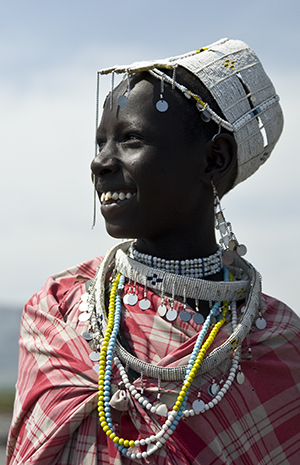 Upon your arrival, you will be collected from the airport and transferred to your lodge in the lush forests surrounding the town of Arusha. If you arrive early enough, you will have an opportunity to explore the lodge grounds, take a dip in the swimming pool or partake in any of the offered additional activities available. Upon your arrival, you will be collected from the airport and transferred to your lodge in the lush forests surrounding the town of Arusha. If you arrive early enough, you will have an opportunity to explore the lodge grounds, take a dip in the swimming pool or partake in any of the offered additional activities available.
|
Overnight: Moivaro Coffee Plantation Lodge or similar.
Meals: Dinner: at Moivaro Coffee Plantation Lodge or similar.
|
DAY 2;
(1 Night)
ARUSHA - TARANGIRE NATIONAL PARK- MANYARA [Lodge] |
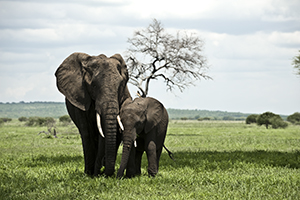 Your safari begins after breakfast this morning. Our first stop is Arusha town, for any last minute purchases before we head off on an exciting safari experience! We will be in the Tarangire National Park for lunch and an afternoon game drive. Tarangire is well known for its huge elephant population and baobab trees. It forms the centre of the annual migratory cycle that includes up to 3000 elephant, 25,000 wildebeest and 30,000 zebra. Your safari begins after breakfast this morning. Our first stop is Arusha town, for any last minute purchases before we head off on an exciting safari experience! We will be in the Tarangire National Park for lunch and an afternoon game drive. Tarangire is well known for its huge elephant population and baobab trees. It forms the centre of the annual migratory cycle that includes up to 3000 elephant, 25,000 wildebeest and 30,000 zebra.
|
Distance: 250 km
Driving time: 4-5 hours (including game drive speeds).
Overnight: Rift Valley Photographic Lodge or similar.
Meals: Breakfast: at Moivaro Coffee Plantation Lodge or similar; Lunch: Picnic lunch from Moivaro Coffee Plantation Lodge or similar; Dinner: at Rift Valley Photographic Lodge or similar. |
DAY 3;
(1 Night)
CULTURAL ACTIVITIES AT MANYARA, Lake Manyara [Lodge] |
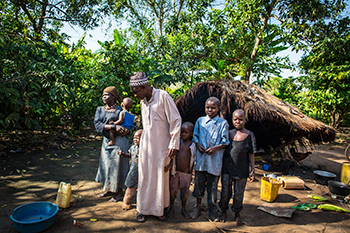 After breakfast, we set out to experience the cultural diversity of Mto-wa-Mbu, starting at the market and visiting a Chagga family producing banana beer and passing by many different farms. On the way, your guide will introduce you to the various fruits and vegetables growing in the area and explain the irrigation system that sustains local crops. After having a delicious, home-cooked meal in a local Mama’s home, we visit the nearby centre for disabled kids and school. Late afternoon we enjoy a visit to the Maasai Boma for the cultural encounter of a life time. The Maasai people are semi-nomadic herders, who choose to live a traditional lifestyle and are known for their distinctive traditional attire. On completion we return to the lodge for dinner & overnight. After breakfast, we set out to experience the cultural diversity of Mto-wa-Mbu, starting at the market and visiting a Chagga family producing banana beer and passing by many different farms. On the way, your guide will introduce you to the various fruits and vegetables growing in the area and explain the irrigation system that sustains local crops. After having a delicious, home-cooked meal in a local Mama’s home, we visit the nearby centre for disabled kids and school. Late afternoon we enjoy a visit to the Maasai Boma for the cultural encounter of a life time. The Maasai people are semi-nomadic herders, who choose to live a traditional lifestyle and are known for their distinctive traditional attire. On completion we return to the lodge for dinner & overnight.
|
Overnight: Rift Valley Photographic Lodge or similar.
Meals: Breakfast: at Rift Valley Photographic Lodge or similar; Lunch: at a local Mama’s Home; Dinner: at Rift Valley Photographic Lodge or similar. |
DAY 4;
(1 Night)
LAKE MANYARA NATIONAL PARK - LAKE EYASI [Tented Camp] |
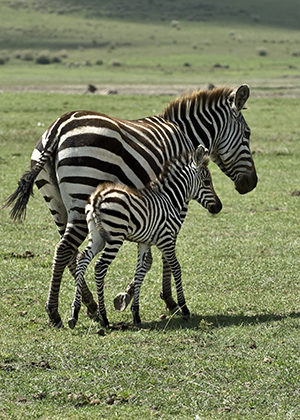 After coffee and breakfast, we head towards Lake Manyara National Park for an early morning game drive. This spectacular national park is located at the north-western corner of Lake Manyara, a shallow soda lake at the foot of the Great Rift Valley’s western escarpment. Lake Manyara is not only known for its large flocks of flamingos, but also for the elusive tree-climbing lions. After lunch and a short afternoon game drive, we head towards our lodge at Lake Eyasi. After coffee and breakfast, we head towards Lake Manyara National Park for an early morning game drive. This spectacular national park is located at the north-western corner of Lake Manyara, a shallow soda lake at the foot of the Great Rift Valley’s western escarpment. Lake Manyara is not only known for its large flocks of flamingos, but also for the elusive tree-climbing lions. After lunch and a short afternoon game drive, we head towards our lodge at Lake Eyasi.
|
Distance: 120 km
Driving time: 4-5 hours (including game drive speeds).
Overnight: Lake Eyasi Safari Camp or similar.
Meals: Breakfast: at Rift Valley Photographic Lodge or similar; Lunch: Lunch pack from Rift Valley Photographic Lodge or similar; Dinner: at Lake Eyasi Safari Camp or similar. |
DAY 5;
(1 Night)
LAKE EYASI [Tented Camp] |
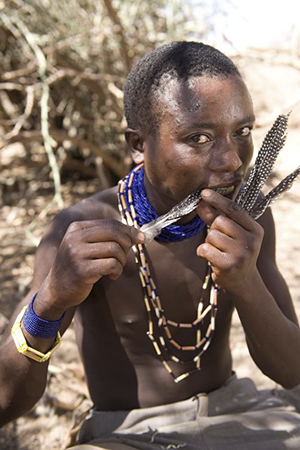 Today’s activities are interacting with local Bushmen & Blacksmiths communities. The Hadzabe Tribe, live in groups hunting with bow and arrows and gathering roots, tubers and wild fruits, much as humankind lived in the Stone Age. We will obtain an in-depth look at how they continue to survive and adapt to their harsh environment and the challenges they face in continuing their nomadic existence. The Hadzabe have close relations with the Datoga tribe, blacksmiths who have developed their trade over centuries and still practice it very much the same way today. They produce the arrow heads for the Hadzabe and brass trinkets, some of which will be for sale by the maker himself. Today’s activities are interacting with local Bushmen & Blacksmiths communities. The Hadzabe Tribe, live in groups hunting with bow and arrows and gathering roots, tubers and wild fruits, much as humankind lived in the Stone Age. We will obtain an in-depth look at how they continue to survive and adapt to their harsh environment and the challenges they face in continuing their nomadic existence. The Hadzabe have close relations with the Datoga tribe, blacksmiths who have developed their trade over centuries and still practice it very much the same way today. They produce the arrow heads for the Hadzabe and brass trinkets, some of which will be for sale by the maker himself.
|
Overnight: Lake Eyasi Safari Camp or similar.
Meals: Breakfast: at Lake Eyasi Safari Camp or similar; Lunch: Lunch pack from Lake Eyasi Safari Camp or similar; Dinner: at Lake Eyasi Safari Camp or similar. |
DAY 6;
(1 Night)
LAKE EYASI - SERENGETI [Tented Camp] |
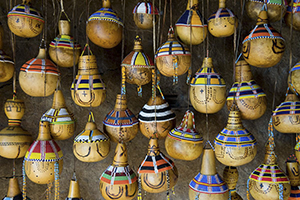 This morning, we head through the Ngorongoro Conservation Area via Eyasi escarpment to Endulen, Ndutu open area towards the Serengeti National Park. We will stop at a Masai village, which is not a touristic Masai Boma, for a cultural encounter of a life time. The Masai people are semi-nomadic herders, who choose to live a traditional lifestyle and are known for their distinctive traditional attire. After lunch, we embark on a game drive within the park on our way to the lodge. This morning, we head through the Ngorongoro Conservation Area via Eyasi escarpment to Endulen, Ndutu open area towards the Serengeti National Park. We will stop at a Masai village, which is not a touristic Masai Boma, for a cultural encounter of a life time. The Masai people are semi-nomadic herders, who choose to live a traditional lifestyle and are known for their distinctive traditional attire. After lunch, we embark on a game drive within the park on our way to the lodge.
|
Distance: 290 km
Driving time: 5-6 hours (including game drive speeds).
Overnight: Kisura Kenzan Tented Camp or similar.
Meals: Breakfast: at Lake Eyasi Safari Camp or similar; Lunch: Lunch pack from Lake Eyasi Safari Camp or similar; Dinner: at Kisura Kenzan Tented Camp or similar. |
DAY 7;
(1 Night)
SERENGETI NATIONAL PARK, Serengeti [Tented Camp] |
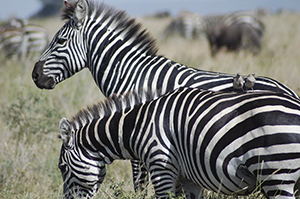 Today our game drive will lead us towards the central part of Serengeti National Park. We look for large herds of wildebeests pounding the grasslands, while hungry predators such as lions, leopards and cheetahs prey upon the youngest and weakest members of the herds. The Serengeti’s endless plains provide an exceptional landscape for wildlife viewing throughout the year. Today our game drive will lead us towards the central part of Serengeti National Park. We look for large herds of wildebeests pounding the grasslands, while hungry predators such as lions, leopards and cheetahs prey upon the youngest and weakest members of the herds. The Serengeti’s endless plains provide an exceptional landscape for wildlife viewing throughout the year.
|
Overnight: Kisura Kenzan Tented Camp or similar.
Meals: Breakfast: at Kisura Kenzan Tented Camp or similar; Lunch: Lunch pack from Kisura Kenzan Tented Camp or similar; Dinner: at Kisura Kenzan Tented Camp or similar. |
DAY 8;
(1 Night)
SERENGETI NATIONAL PARK [Tented Camp] |
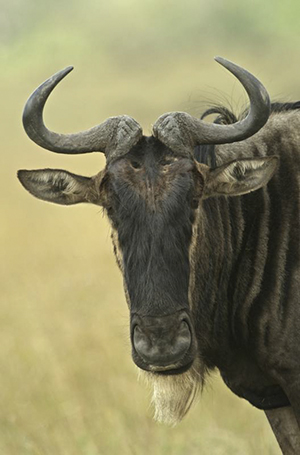 Enjoy a full day of game viewing in the Serengeti National Park. The Serengeti is renowned for its annual wildebeest migration and large predator population. From February to May, a herd of over a million wildebeest (gnu) migrate for the Western Corridor of the park, in search of greener pastures. The Serengeti’s other animal attractions include lion, leopard, zebra, Thompson gazelle, impala, Grant’s gazelle and buffalo. Most of the park is open swathes of grassland, broken by isolated granite kopjes (hills) and patches of acacias woodlands. Enjoy a full day of game viewing in the Serengeti National Park. The Serengeti is renowned for its annual wildebeest migration and large predator population. From February to May, a herd of over a million wildebeest (gnu) migrate for the Western Corridor of the park, in search of greener pastures. The Serengeti’s other animal attractions include lion, leopard, zebra, Thompson gazelle, impala, Grant’s gazelle and buffalo. Most of the park is open swathes of grassland, broken by isolated granite kopjes (hills) and patches of acacias woodlands.
|
Overnight: Kisura Kenzan Tented Camp or similar.
Meals: Breakfast: at Kisura Kenzan Tented Camp or similar; Lunch: Lunch pack from Kisura Kenzan Tented Camp or similar; Dinner: at Kisura Kenzan Tented Camp or similar. |
DAY 9;
(1 Night)
SERENGETI NATIONAL PARK - NGORONGORO - LAKE MANYARA [Lodge] |
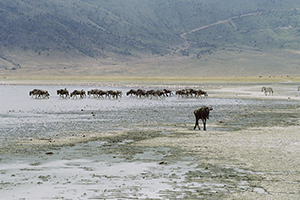 We take an early breakfast at camp and then head to the Ngorongoro Crater. On arrival we go through the registration process and descend to the floor of the world’s largest unbroken caldera for the most wonderful day of game viewing. We will have lunch at the Lerai picnic site at the side of the hippo pool and continue with a game drive up the crater rim. We take an early breakfast at camp and then head to the Ngorongoro Crater. On arrival we go through the registration process and descend to the floor of the world’s largest unbroken caldera for the most wonderful day of game viewing. We will have lunch at the Lerai picnic site at the side of the hippo pool and continue with a game drive up the crater rim.
|
Distance: 400 km (including the Crater)
Driving time: 6-7 hours (mostly at game drive speeds).
Overnight: Rift Valley Photographic Lodge or similar.
Meals: Breakfast: at Kisura Kenzan Tented Camp or similar; Lunch: Lunch pack from Kati Kati Tented Camp or similar; Dinner: at Rift Valley Photographic Lodge or similar. |
DAY 10;
ARUSHA [TOUR ENDS] |
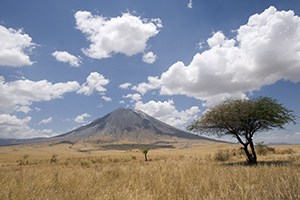 After breakfast we explore the colourful town of Mto-wa-Mbu for some last minute pictures and curio shopping. Afterwards we head to Arusha where the tour will end at our local representatives' offices. We hope to welcome you again on one of our African adventures. After breakfast we explore the colourful town of Mto-wa-Mbu for some last minute pictures and curio shopping. Afterwards we head to Arusha where the tour will end at our local representatives' offices. We hope to welcome you again on one of our African adventures.
|
Overnight: N/A
Meals: Breakfast at Rift Valley Photographic Lodge or similar.
|
Note: The accommodation specified in the itinerary is a guide only and is subject to availability. Alternatives will be nearby and of a similar standard.
 Top Top
CLICK TO SEE DEPARTURE DATES
Included
Nine (9) nights in lodge accommodation, all transport in appropriate vehicle, game drives as mentioned, meals and activities as mentioned in itinerary, park entrance fees (quoted separately), and services of an experienced professional guide.
Excluded
Travel insurance, flights and taxes, health requirements, visa fees, pre and post tour accommodation, optional activities, all drinks, telephone calls, gratuities, curios and all personal expenses.
Departure
The Tanzania Wildlife and Cultural Explorer departs from the Moivaro Coffee Plantation Lodge in Arusha.
When arriving in Arusha on day one, you will be picked up from the airport and transferred to your lodge. Should you arrive prior to day one, pre-tour accommodation can be arranged and you will be picked up from your hotel on the morning of day. In the evening of first day of your safari, there will be a pre-departure meeting presented by your guide at your accommodation. It is imperative that all clients attend this meeting so as not to miss out on any critical information.
Whilst it is our every intention to adhere to the above mentioned itinerary, there may on occasion be a necessity to make alterations in order to make the tour more enjoyable or practical. Therefore please treat the itinerary as a guide only.
Transport
Fully equipped customized 12-seater 4x4 safari vehicles, Toyota Land Cruisers or other appropriate vehicles with comfortable seating, large windows for game viewing and a music system. The vehicles are fully air-conditioned and equipped with pop-up roofs to facilitate the best game viewing. All luggage, besides hand luggage and photo equipment, is carried on the vehicle roof rack or trailer to ensure maximum comfort in the vehicle.
Travelling Times and Distances
All travelling times are affected by road conditions, border crossings, detours and weather conditions, therefore on certain days travelling times may be longer than anticipated especially where there is a lot of distance to be covered. Please keep in mind that the time it takes to travel 100 km in your home country is not equivalent to the time it takes to travel 100 km on African roads, therefore we encourage you to sit back and enjoy the spectacular scenery Africa has to offer. Where possible additional stops will be made to ensure your travelling comfort at all times.
Accommodation
For our accommodated safari, we make use of mid-range lodge accommodation. Your accommodation is situated either in National Parks, on the banks of a river, or in other places of interest. The accommodation will be a mix of lodges, chalets and permanent tented chalets with en-suite facilities. Some properties are equipped with swimming pools and/or bar areas.
Spending Money
Clients are advised to bring enough money to cover the purchase of curios, tips for the guide and additional entertainment. US Dollars and Tanzanian Shilling are the most practical and convenient currencies.
First Aid
Our guides are trained in basic first aid and the vehicle is equipped with a medical aid kit. Preventative Malaria medication should be taken before the trip and throughout its duration and it is advisable to consult a doctor prior to departure. Yellow Fever vaccinations are compulsory – please contact your Travel Clinic before departure.
Luggage
Maximum baggage allowance: 12 kg. This is the stipulated luggage allowance, as an overloaded vehicle is a danger to both the clients and the guide. This does not include photographic equipment and a small daypack. Please bring soft-sided luggage (e.g a backpack or soft barrel bag), not a suitcase. Don't bring too much clothing, as there are washing opportunities along the way. Please adhere to the allowance specified, as space for luggage is limited.
Visas
The onus is on the client to organize all visas required for a visit to Tanzania prior to departure.
Information on Areas Visited
TANZANIA
A land of plains, lakes and mountains, with a narrow, low-lying coastal belt, Tanzania is East Africa's largest country and also one of its most diverse. Tanzania is home for more than 100 different ethnic groups, mostly of Bantu origin, each with its own language and customs.
Tanzania has one of the largest and wildest animal populations in the world. Wildebeest, monkey, antelope, lion, cheetah, crocodile, gazelle, and flamingo - you name them. Blessed with some of the world's largest game reserves, the country also has one of the highest concentrations of elephant, buffalo, hippo, wild dog and chimpanzee.
Its spectacular topography includes The Great Rift Valley, Mt Kilimanjaro and famous parks such as the Serengeti and the wonderful Ngorongoro Crater.
Offshore are idyllic islands with beautiful palm-fringed beaches and turquoise seas that surround pristine coral reefs. The archaeological treasures of Tanzania include hominid fossils, which are more than 300 million years old. Tanzanian music and dance dominates much of East Africa. Strong in rhythm and renowned for hard-hitting lyrics, the country's Swahili-based sounds are kept very much alive by a thriving dance-band scene. Nyama choma (barbecued meat) has taken over in a big way, especially in restaurants with attached bars. But on the coast, on Zanzibar and Pemba islands, there's a decent range of traditional Swahili dishes based on seafood.
Recorded history begins around 1800, when the Masai warrior tribes were migrating from Kenya to Tanzania. It wasn't until the middle of the 18th century that Arab traders and slaves dared venture into Masai territory in the country's wild interior. European explorers began arriving in earnest in the mid-19th century, the most famous being Stanley and Livingstone. The famous phrase 'Dr Livingstone, I presume', stems from the duo's meeting at Ujiji on Lake Tanganyika. Tanganyika won independence in 1961 with Julius Nyerere as the country's first president. Nyerere, whose secret ingredient was radical socialism, gained widespread respect and is seen as one of the most influential leaders Africa has ever had. Zanzibar was stuck for another two years, after which the mainland forged a union comprising Zanzibar and the nearby island of Pemba. Thus Tanzania was born.
There is a wide range of optional activities to make your experience in Tanzania absolutely unforgettable. Some great views can be experienced while floating in a hot-air balloon over the Serengeti. While swimming with dolphins is all the rage on the island of Zanzibar. Snorkeling and scuba diving is equally popular due to the world-class coral reefs off nearby Pemba and Mafia islands.
Tarangire National Park
The Tarangire National Park covers 2,600km² and habits the highest concentration of wildlife outside the Serengeti ecosystem. Here, you can watch huge herds of wildebeest, eland, zebra, buffalo, impala, gazelle and elephant moving through the undulating countryside and taking a rest under a vast number of baobab trees, or drinking at the lagoons and the rivers. Remember not to just look on the ground though, but have a look at the branches of the trees for lion, leopard and pythons or the amazing 550 bird species also found in this area.
Lake Manyara National Park
Lake Manyara National Park sits at the base of the Great Rift Valley escarpment and is one of the most scenic parks in Tanzania. There are stunning views of the park from every direction. From the east, the Rift Valley escarpment emerges on the horizon with the lake forming a glistening background. On the southern side of the park, you will find the hot springs of Maji Moto, which are about 60ºC. At the top of the escarpment from the west, the park stretches across a ribbon of green with the lake shining in the sun. Like most Rift Valley lakes, the water is alkaline. This attracts vast flocks of flamingos, which form pink foam against a silver background of water. Altogether, this area offers beautiful views as you take in the massive lake with its silver shimmer and surrounding vegetation. The major landmark is the spectacular rift wall, where the plains give way to cultivated uplands of Mbululand. Measuring only 330km2 (of which the lake occupies 230km2) and located only 130km from Arusha, this park often gets day visitors, who come to enjoy the endless views and variety of mammals, reptiles and birds, as well as the varied vegetation, flora and fauna. Animals found in the area include zebra, elephant, hippo, monkey, wildebeest (gnu), waterbuck, warthog, gazelle, impala, buffalo, warthog, hyena, baboon and giraffe. Manyara is also known for its tree-climbing lions. These majestic animals find shelter fromthe heat and biting flies in the branches of trees and can easily kill buffalo, which is far greater in weight and size. There are also over 350 species of bird life, with a variety of local species inhabiting the forest and bush, including pelicans that waddle around next to short grasses on the shore of the lake.
Ngorongoro Conservation Area
Being one of the largest calderas in the world, 20 km (12.4 miles)-wide, 600 m (1.968ft) tall, with a variety of animals and vegetation, Ngorongoro Crater is one of Tanzania's most visited areas. The vegetation includes grasslands, swamps, forests, salt-pans, as well as a freshwater lake and has been compared to Noah's Ark or the Garden of Eden.
You will have no trouble finding lion, elephant, rhino, buffalo and many of the plains herbivores such as wildebeest (gnu), Thomson's gazelle, zebra and reedbuck, as well as thousands of flamingo wading in the shallows of Lake Magadi, the soda lake on the floor of the crater. Within the steep walls of the crater you will find considerable movement of animals and you may well come across local Masai tribesmen (who have grazing rights here), tending their cattle.
Lake Eyasi
Lake Eyasi is a scenic soda lake found on the southern border of the Ngorongoro Conservation Area. This less visited lake lies at the base of the Eyasi escarpment on the western rift valley wall. To the northeast, as far as your eyes can see, the horizon is dominated by the impressive Crater Highlands, and to the north the plains of the Serengeti. Lake Eyasi is inhabited by small groups of Bushmen, in particular the Hadzabe & Datoga Tribes.
Hadzabe: An ethnic group who live in groups hunting with bow and arrows and gathering roots, tubers and wild fruits much as humankind lived in the Stone Age.
Datoga: The Datoga are nomadic cattle herders who also live around the lake. They are blacksmiths by trade and supply the Hadzabe with heads for their arrows and both the Hadzabe as well as the Masai with various ornaments and jewellery. The people of these indigenous tribes are probably the last living in true harmony with nature and have a wealth of Fauna and Flora knowledge to share.
Lake Ndutu
Lake Ndutu forms a shallow basin where water accumulates from the nearby areas of slightly higher altitude. The water in the lake is extremely saline, too saline for human consumption but Lake Ndutu becomes alive with animals during the migration because it is surrounded by the Ndutu woodlands and the Short Grass Plains, which provide ample cover and food.
Serengeti National Park
Serengeti, which sprawls across 14.763 km2 (5.757 miles2), is Tanzania's largest and most famous national park. The chief herbivore of Serengeti is the wildebeest (gnu) of which there are up to two million. The amazing annual migration of wildebeest herds is one of the biggest attractions of the Serengeti. It begins at the Serengeti National Park near the Kenyan border, when huge herds of these animals, head for greener pastures in Kenya. Starting in April each year, they migrate across the Serengeti's southern plains accompanied by zebra, antelope, gazelle, lion and tourists! The park is also famous for its lions, which can be tracked due to the fact that many have collars fitted with transmitters, as well as cheetah and large herds of giraffe.
 Top Top
Please contact us for dates.
 Top Top  Return to Budget Safari Packages Return to Budget Safari Packages
|